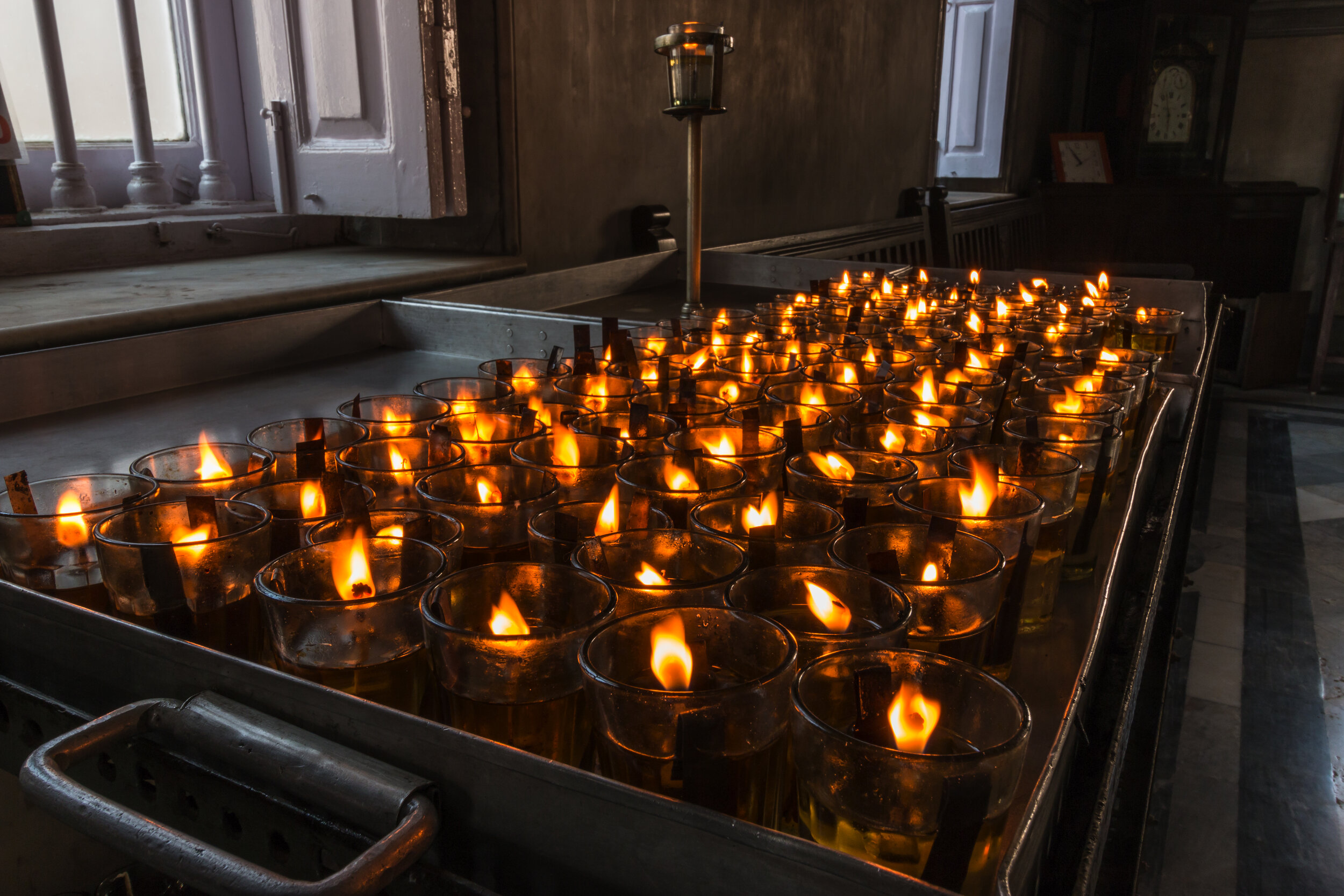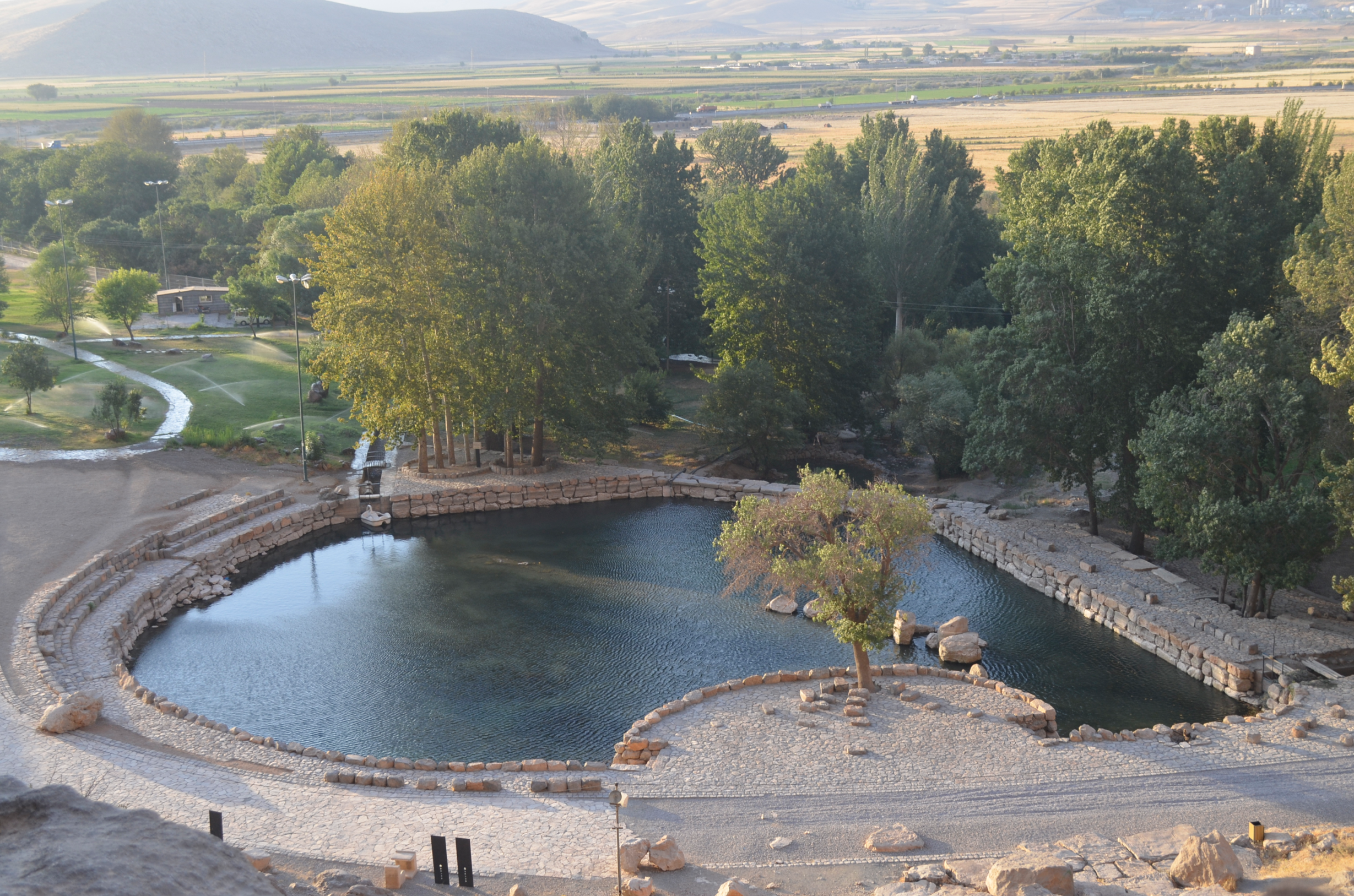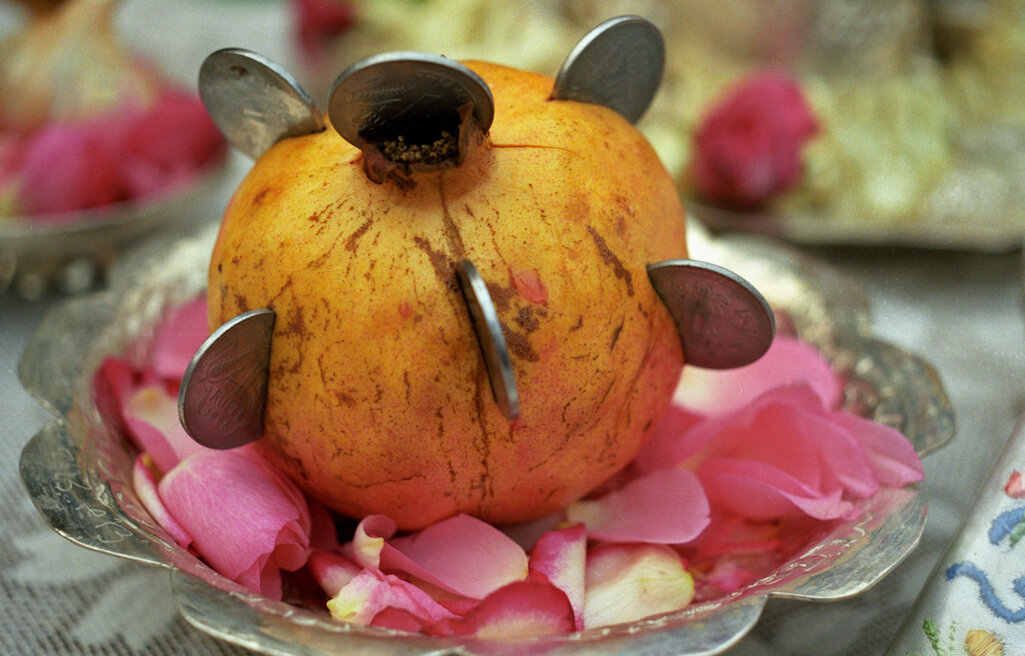
Department of Ecology & Society
Festivals
Zoroastrians the world over follow three different variants of the ancient Iranian calendars- the Shahanshahi, Kadimi and the Fasli. Despite their differences based on intercalation in comparison to the Gregorian calendar, the commonality, that all the 3 Iranian calendars are based on seasonal cycles, remains.
Zarathustra taught that all things flourish according to the law of reciprocity – the six holy festivals of the pastoral and farming year, known as the Gahanbars, remind man to celebrate and thank the elements, which make life possible. Each gahanbar represents one of Ahura Mazda's Amesha Spenta or a primordial creation and are celebrated during different times of a year.
Zoroastrians still celebrate the birthday of Fire as a special day– Adar Mahino Adar Roj, and Ava Mahino, Ava Roj is celebrated as the birthday of water. While these, are noteworthy, auspicious days or periods in the Zoroastrian calendar that are celebrated with small gestures and rituals in the home, there are also many festivals, other than the gahanbar periods, which bring families and communities together through the year.
Navroze
The Iranian New Year falls on 21st March, the Spring Equinox, symbolizing the arrival of spring and the rejuvenation of the land and its offering of grain, fruits and vegetables. On this day, falooda, a rich milk drink flavored with rose water is prepared for the special Navroze Table set up
Navroze, like other Zoroastrian festivals, is a part of the Zoroastrian respect for the environment and reinforces gratitude to nature while teaching generosity to those less fortunate. This festival of the agricultural season dedicated to Ahura Mazda, Lord of Wisdom and the Amesha Spenta, is the most important celebration of the seasons.
The Navroze table is a sight in itself, a representation of many beliefs and ideals of Zoroastrians. The table is laden with innumerable varieties of dry fruits and all items beginning with the letters sh and s, like sherbet (sweet drink with falooda seeds), shaker (sugar), sharab (alcohol), sheer (milk), shem (candle), surka (vinegar), seeb (apple), sikka (coin), suzan (needle), sauzi (green leafy vegetable), sopra (table cloth) etc. would be placed near the prayer place.
New Year wishes remain incomplete without looking at your face in a hand held mirror.
Sometimes, in some parts of India, eager Zoroastrians put up a play for the local community, followed by a homemade snack of sheekh kebab – minced meat or paneer, boiled eggs, spring onions and mint, all rolled in a naan.
Jamshedi-Navroze
Myth, History & Contemporary Practice
Google Art & Culture Online Exhibit
Bulletin from UNESCO
Department of Public Information • News and Media Division • New York
Sixty-fourth General Assembly
Plenary
71st Meeting (PM)
General Assembly Recognizes 21 March as International Day of Nowruz
The General Assembly this afternoon recognized the International Day of Nowruz, a spring festival of Persian origin…
According to the preamble of the resolution on the International Day (document A/64/L.30/Rev.2), Nowruz, which means new day, is celebrated on 21 March, the day of the vernal equinox, by more than 300 million people worldwide as the beginning of the new year. It has been celebrated for over 3,000 years in the Balkans, the Black Sea Basin, the Caucasus, Central Asia, the Middle East and other regions.
The Assembly called on the Member States that celebrate the festival to study its history and traditions with a view to disseminating that knowledge among the international community and organizing annual commemoration events.
Welcoming the inclusion of Nowruz into the Representative List of the Intangible Cultural Heritage of Humanity by the United Nations Educational, Scientific and Cultural Organization (UNESCO) on 30 September 2009, the text notes the festival’s “affirmation of life in harmony with nature, the awareness of the inseparable link between constructive labour and natural cycles of renewal and the solicitous and respectful attitude towards natural sources of life”.
The text was introduced by Azerbaijan’s representative, who said that, ‘as a holiday celebrated in many parts of the world with themes important to all humanity, Nowruz encouraged intercultural dialogue and understanding’. Speaking after the Assembly took action on the draft, the representative of Iran marked its adoption by quoting lines of the Persian poet Jalaluddin Rumi that expressed the holiday’s theme of rebirth “on our planet and in our souls”.
The UN General Assembly states:
“Novruz is associated with various local traditions such as the evocation of Jamshid, a mythological King of Iran and numerous tales and legends. The rites that accompany the festivity vary from place to place, ranging from leaping over streams in Iran … leaving lit candles at house doors… songs and dances, …semi sacred meals. Women play a key role in organizing Novruz and passing on its traditions. Novruz promotes the values of peace and solidarity between generations and within families as well as reconciliation and neighborliness, thus contributing to cultural diversity and friendship among peoples and various communities”.
Sadeh
The word Sadeh comes from the original “sat” in Pahlavi meaning a hundred. A late winter festival, Sadeh is a mid-winter celebration observed by Zoroastrians a hundred days after the start of the harsh Iranian winter. It includes preparing a large bonfire and is also known as Adur-Jashan (Feast of the Fire). The bonfires are symbolic of community celebrations to welcome a change from the cold dark winter to light and warmth. The bonfires are said to drive back the winter in defiance of Ahriman.
Sadeh has a complex history, and two different traditions are to be noted. According to the tradition followed in Yazd, it is observed on Ashtad Ruz, Adur Mah. This is the 100th (“sadeh” in Persian) day before Navroze. According to the Fasli calendar, this would place it on 11 Dec. The other day, observed by Kermani Zoroastrians, is Aban Ruz, Vohuman Mah. This is the 100th day after the Gahambar of Ayathrima, held to be the beginning of winter, around 24 January.
Traditional food is cooked in Iran, including Sirog, a kind of fried bread. When it starts getting dark, three Mobeds, dressed in white, start moving to light the huge bundle of wood collected for the fire. The Dehmobed (or recently even another member of the community) wearing white, carries a small container of fire, and accompanies the priests. After reciting prayers such as the Atash Nyayesh, they walk around the pile of dry wood three times. The priest initiates the lightning of the fire and others join in. It is a joyous festival accompanied by music and celebrations. Symbolically it is the triumph of light over darkness, embodying the Zoroastrian message.
Legend also has it that King Hoshang of the legendary Peshdadian dynasty celebrated the festival to commemorate the discovery of fire.
This festival has not been celebrated recently in India, where the climatic conditions on the West coast differ so widely from those of Iran. However, interestingly the Diaspora, including both Iranians and Parsi Zoroastrians, particularly in America and Canada, is reviving it.
Tiregan / Ava Parab
The thirteenth day of each Zoroastrian month is Tir or Teshtar. The 13th day in the month of Tir marks the Tiregan festivities. Tirgan is a mid-summer Iranian festival, celebrated annually on Tir 13 (3, 4 or 5) July. Myth and legends of the Oral tradition come together on the occasion of Tirgan, in praise of Tir Yazata who brings rain, at the time of the heat of summer. t also signifies Tishtar the star that brings rainfall when it appears in the sky. The rain festival invoking Tir Yazata is also a supplication to enhance the harvest and defeat drought. In legend, the Tiregan celebrations are about the victory of the Iranians against the Turanians when the troops of Afrasaib had occupied Iran. The two parties agreed that they would settle the land dispute by an archer from Iran who would shoot an arrow; wherever it landed would be the border between the two countries. Aresh, a brave young archer shot this arrow, which determined boundaries and history. A Kermani custom is that of tying a Tir-o-baad thread, of seven colours symbolizing the colours of the rainbow, onto the wrist. When these are removed, the wind is allowed to blow them away, accompanied with the song:
““Tir! You go away! Let the wind come!
Sorrow, go away! Happiness, come in!
Sufferings, leave! Sustenance, come!
The bunch of pearls comes!” ”
In the morning of the Tiregan festivities, Zoroastrians sprinkle water on each other. In rural areas, people go out near streams of water and happily follow this ritual, called Abrizan, while urban dwellers try to go out to suburbs where they can find rivers and streams to celebrate. A parallel festival celebrating the birthday of water in India is the Ava Parab, celebrated on Ava Roj, Ava Mahino with prayers and offerings to the water at the ocean, streams and even wells, in Parsi Agiaries or in older homes.
Mehrgan
Mehrgân is a Zoroastrian and Persian (Iranian) festival celebrated since the pre-Islamic era to honor the Yazata of Mehr which is responsible for friendship, affection and love. It is also widely referred to as the Persian Festival of Autumn. 22nd or 23rd September is the Autumnal Equinox- in Ancient Iran celebrations started with this beginning of the season and ended on the 16th day i.e. on Meher Roj, Meher Mahino.
Mehrgan or Jashn-e-Mehrgan has much to teach the modern world- from the significance of nature to the sanctity of geography. The Persians celebrated both the equinoxes that the earth goes through- their astronomical knowledge taught them how to measure celestial movement as also the metaphysical importance of the Sun to all life on Earth. This acknowledgment, of the power of sunlight giving life to all of Spenta creation, became more and more significant as winter advanced on the Central Asian Steppes. Mythologically, the festival dates back to when the cruel Zohak was defeated and dethroned by Kaveh the blacksmith- his apron became the flag of freedom.
Even as the festival celebrates life and warmth as the Sun moves away from the hemisphere, life and death are seen as equal in a holistic vision of the cosmos and being: in the Iranian and Indian Zoroastrian settlements announcements are made listing those who died in the year gone by. Families gather at the Adarian in Iran and offer prayers followed by the whole community feeding together.
Yalda
Yalda is one of the most celebrated traditional events in Iran which marks the longest night of the year. Every year, on 21 December, Iranians celebrate the arrival of winter, the renewal of the sun and the victory of light over darkness on Yalda Night.
Muktad
It is believed that once a year all the Fravashis come down to Earth for the annual festival of Remembrance, the Hamaspathmaidya or Muktad, where they dwell with their families and offerings of prayers and consecrated foods are made to them. On the New Year, they return to their spiritual abode after blessing their loved ones for the year ahead. The Fravashis are invoked for aid at all times and are constantly commemorated by the faithful. The Fravashis honored are not only those of the dead but also of the living and of those still to be born.












